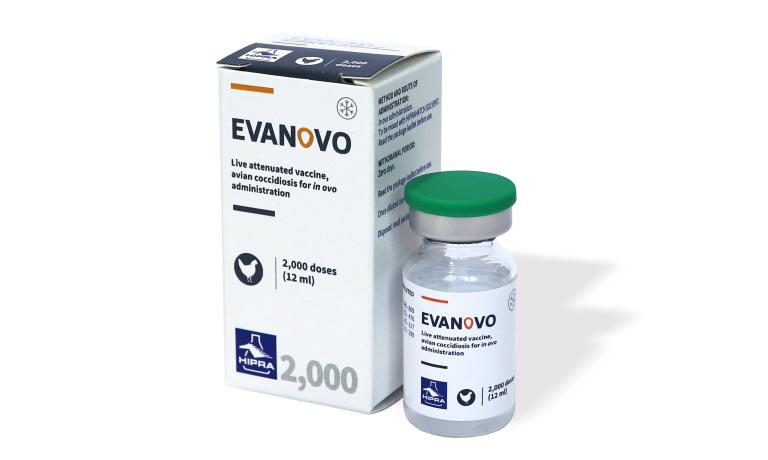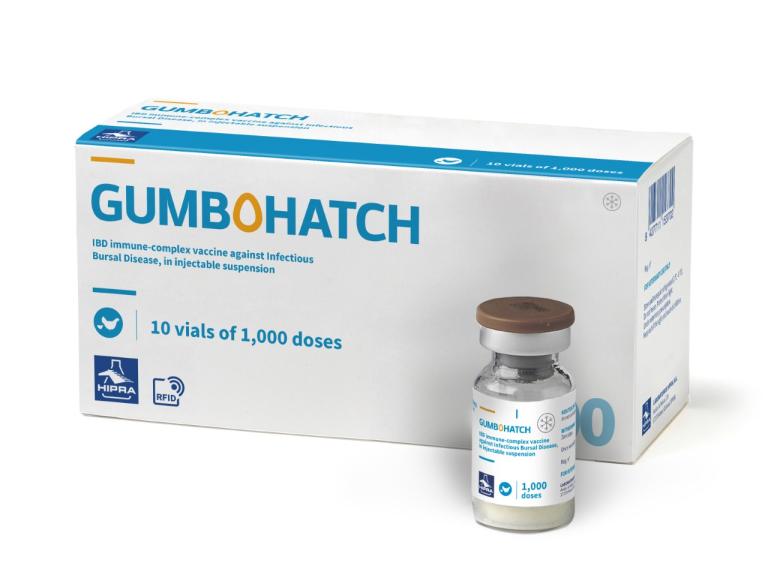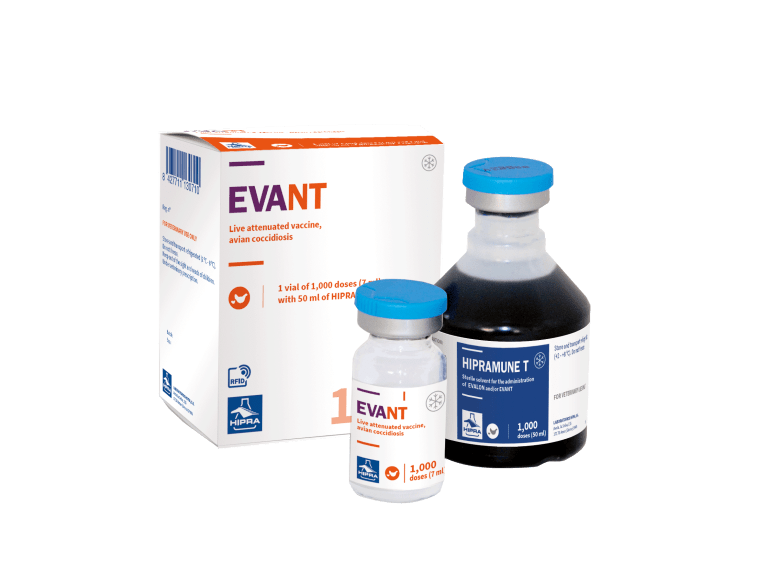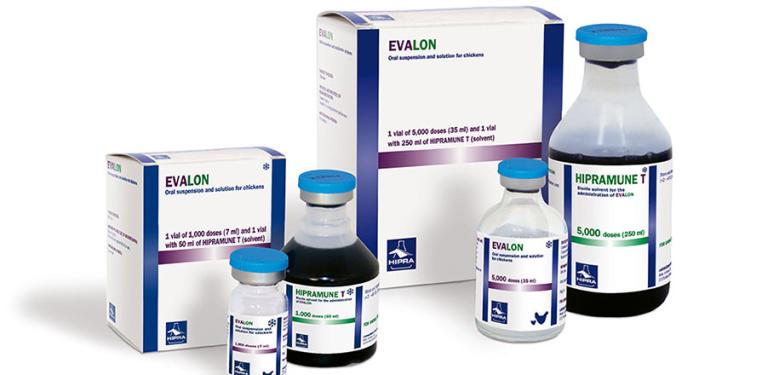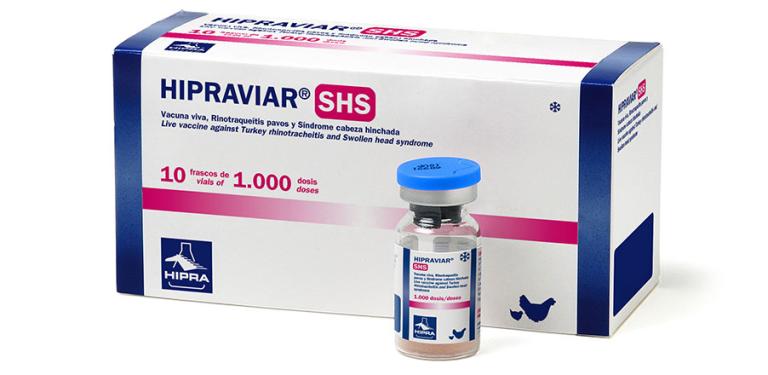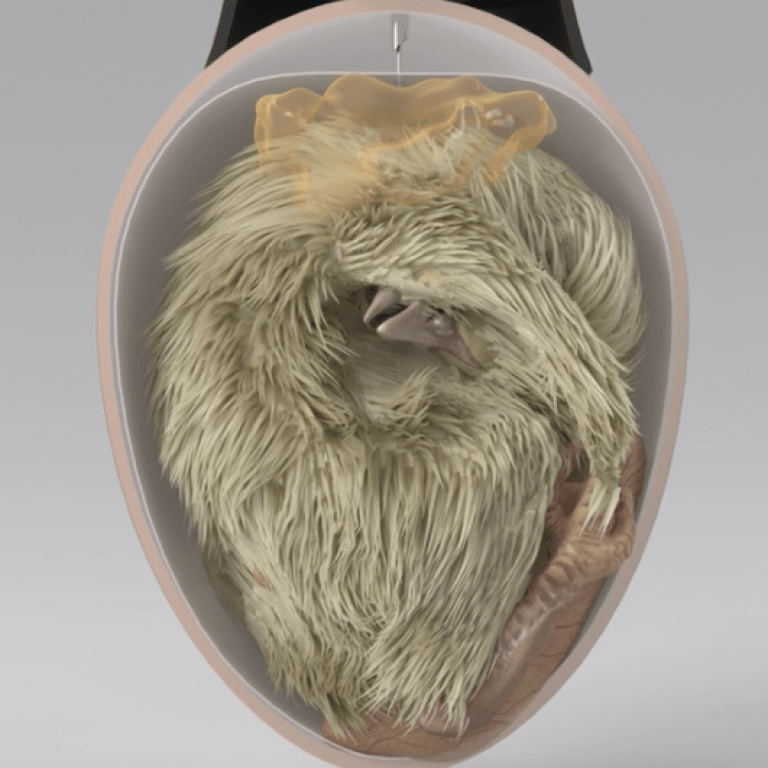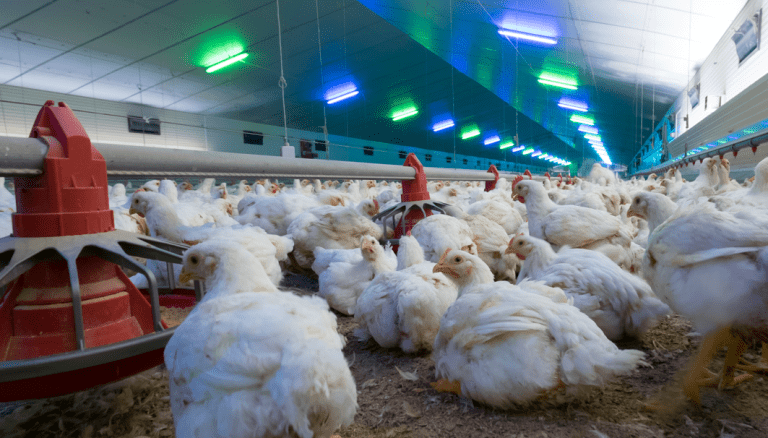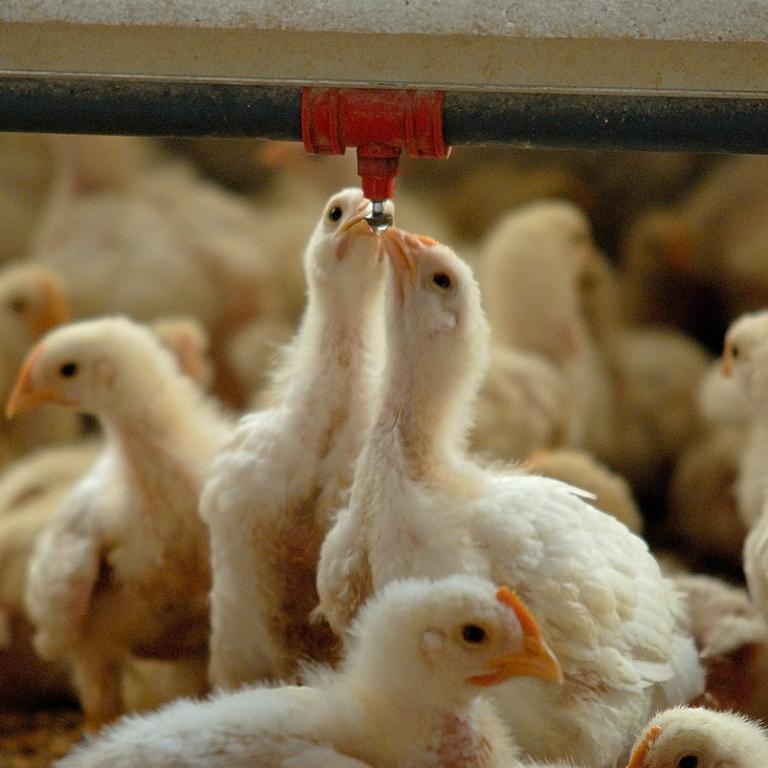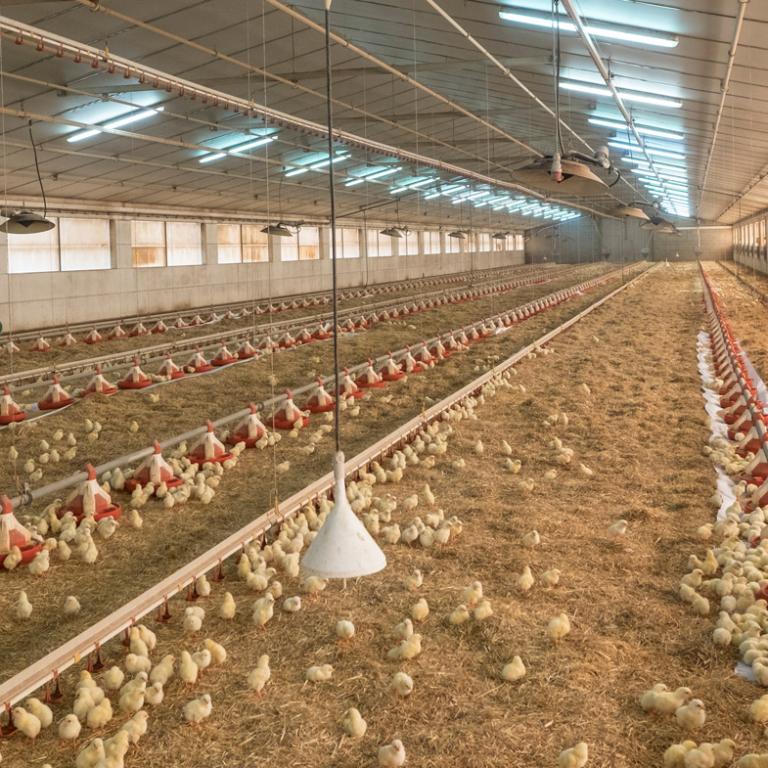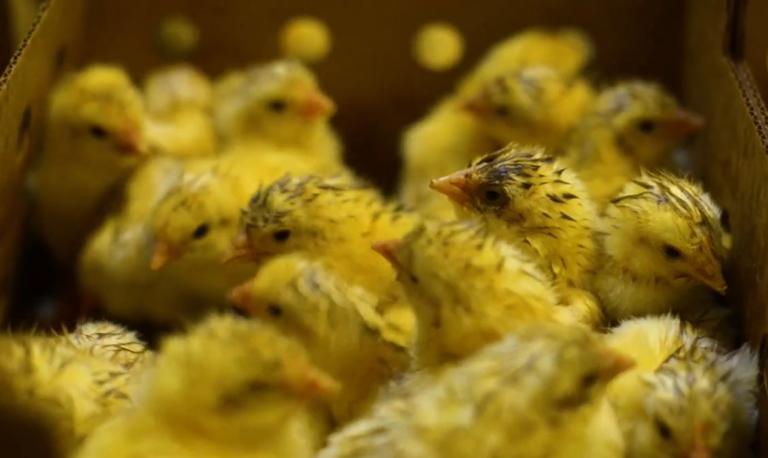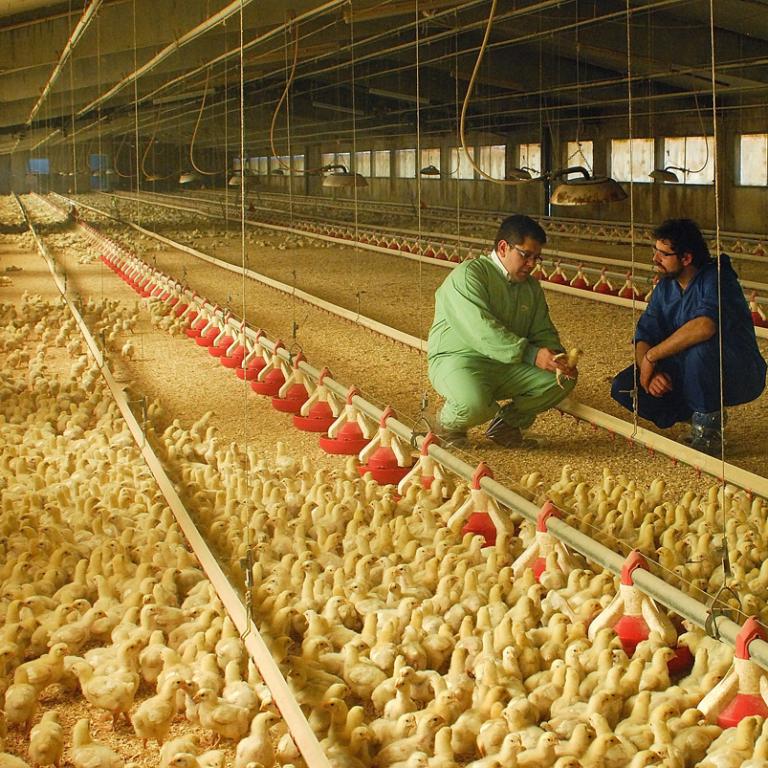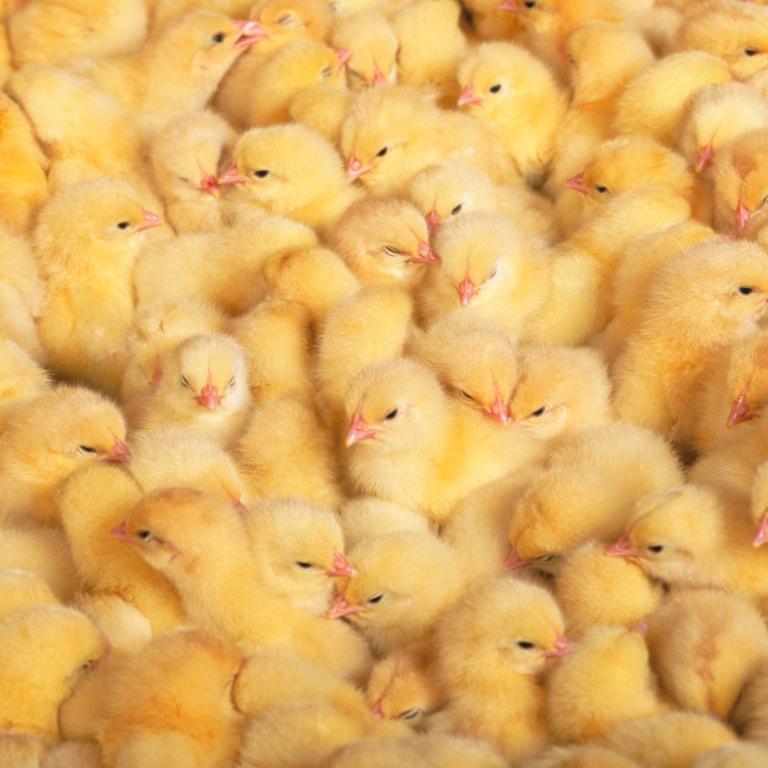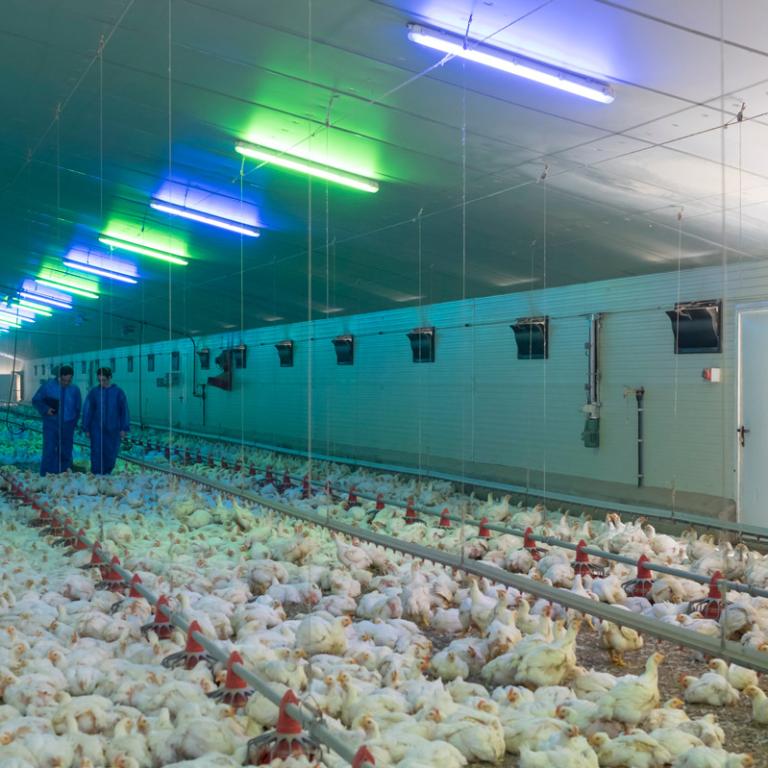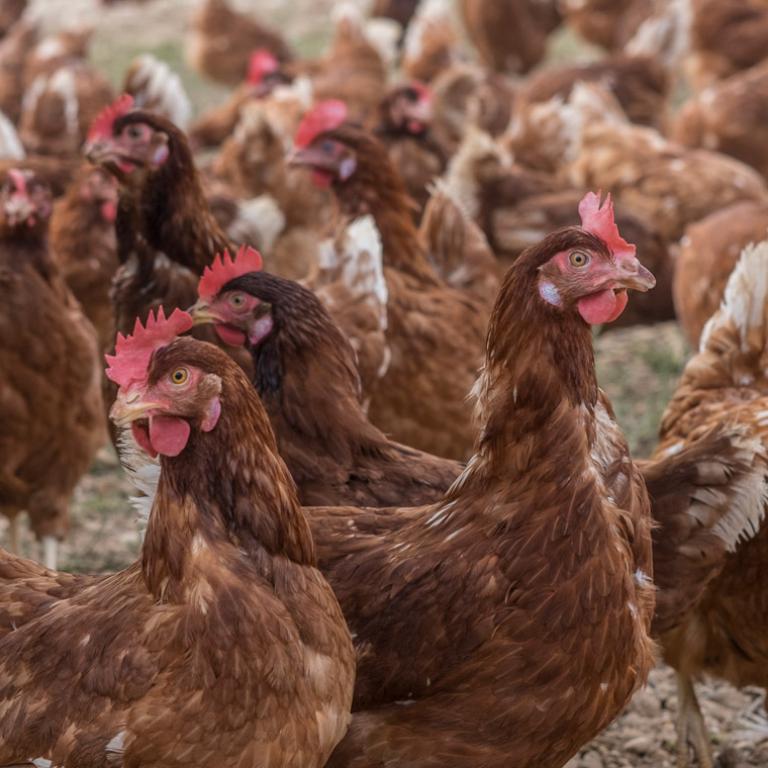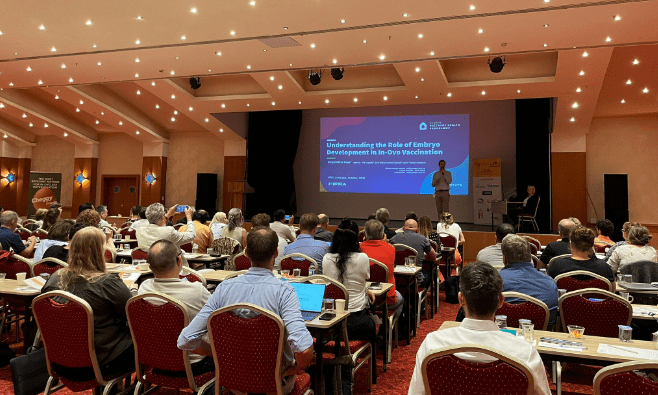Proper oocyst distribution is a key point for the success of spray application of a coccidia vaccine. Generally speaking, a coccidia vaccine is a suspension of sporulated oocysts in a PBS solution. Because of this fact and because of the characteristics of the oocysts, there are some differences to a common viral freeze-dried vaccine that must be taken into account during the vaccination process.
Coarse spray application of a coccidia vaccine for correct oocyst ingestion

There are several methods by which coccidia vaccines can be applied, but probably the most convenient, consistent, reliable and accurate way is via coarse spray in the hatchery. Spraying the vaccine directly on to the feed risks desiccating the oocysts and that is one of the few weak points of oocysts.
Other options such as via the drinking water are also suitable, but this is tedious and involves some risks, for example, in the case of long nipple drinker lines oocysts will be deposited at the bottom and can also be retained along the nipple mechanism.
In some countries the vaccine is applied by spray on the farm at the time the chicks are received. This method is also effective but it is time-consuming for the staff, there is inconsistency between farms, portable sprayers or backpacks are not as accurate as cabin sprayers and it can be counterproductive for the day old chicks if water and feed withdrawal are increased after an already long journey.
As shown in the title, oocyst distribution is the key factor for the success of spray vaccination in the hatchery. The first challenge that we face is maintaining a homogenous distribution of the oocysts in the suspension. Once the vaccine is diluted in the total amount of water that will be used for vaccination, the oocysts have to be kept evenly distributed in the vaccine solution. To achieve this nowadays, magnetic stirrers or aquarium oxygenation systems are used. As the vaccine solution is used and the volume decreases, if no adjustments are made to the speed of the magnet or the bubbling, the oocysts will be unevenly distributed in the solution and consequently the vaccine will not be applied evenly. Some boxes will receive high numbers of oocysts, while others will receive low numbers or, in extreme situations, no oocysts at all. Nowadays, technology allows us to control this critical point of the process with more precise stirring mechanisms such as the one used in HIPRASPRAY®. The vaccine container in HIPRASPRAY® has a volume level control and the stirrer mechanism adjusts itself automatically according to the level in the container.
A second challenge for a homogenous distribution of the oocysts is the time when the vaccine is actually sprayed. There are two main parameters that have to be controlled, droplet size and spray pattern.
Oocysts have to be ingested so a really coarse spray is needed, over 200 µm, preferably 250 µm, at the time of vaccination. To obtain such a large droplet size, the type of nozzle, the volume of vaccine solution and the pressure of the piston have to be considered.

Starting with the nozzle, there is no standard recommendation so the supplier of the vaccination equipment has to provide a guideline as starting point. Most of the time, the nozzle is the limiting factor and decisions such as cone type versus fan type, as well as flow rate, have to be made. The selection of cone or fan will be mainly made according to the kind of spray device that is used. Manual cabin sprayers require a cone-type nozzle, usually a hollow cone, so it is not uncommon to find a “dead” area that is not covered by the vaccine solution. Automatic or semiautomatic devices allow conveyor belts and fan type nozzles to be used, spraying a “curtain” covering the whole surface of the chick box with no “dead” areas.
This kind of spray device using conveyor belts allows us to introduce belt speed and box size sensors, increasing the reliability and accuracy of the vaccination process. A minor detail but crucial for good oocyst distribution is the absence of any obstruction such as strainers on the circuit or nozzle.
Moving on to the pairing volume & pressure – with a fixed volume and by modifying the pressure applied on the piston, the droplet size as well as the spray pattern can be varied, and vice versa. This is the reason why it is important to have a consistent and reliable source of pressure. We are used to cabin sprayers using compressed air to move the piston and the source of the compressed air comes from a portable compressor or from a central compressed air line commonly found in hatcheries. Sometimes we experience fluctuations in compressed air flow that can affect the accuracy of the vaccination process. Electronically operated pistons eliminate this risk factor and are far more accurate than any air-operated pistons. While for respiratory vaccines we apply volumes of vaccine solution between 12 to 18 ml per box (80 to 100 chicks per box), in coccidiosis vaccines larger volumes of around 25 to 28 ml per box will be used. It is important that all the birds in the box are wet and that there is no excessive waste of vaccine solution outside the box or on the walls. The vaccine solution on the walls of plastic boxes can be consumed by the chicks but this phenomenon can’t be exploited on cardboard boxes where vaccine solution will be immediately absorbed and the oocysts will therefore be unavailable.
Hatchery coccidiosis spray vaccination can be the best option if we manage to obtain proper oocyst distribution during the process. With a spray device like HIPRASPRAY® all the variables that can affect the efficacy of the vaccination are under control.


